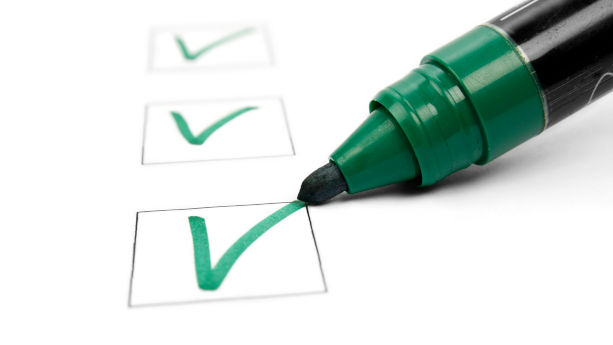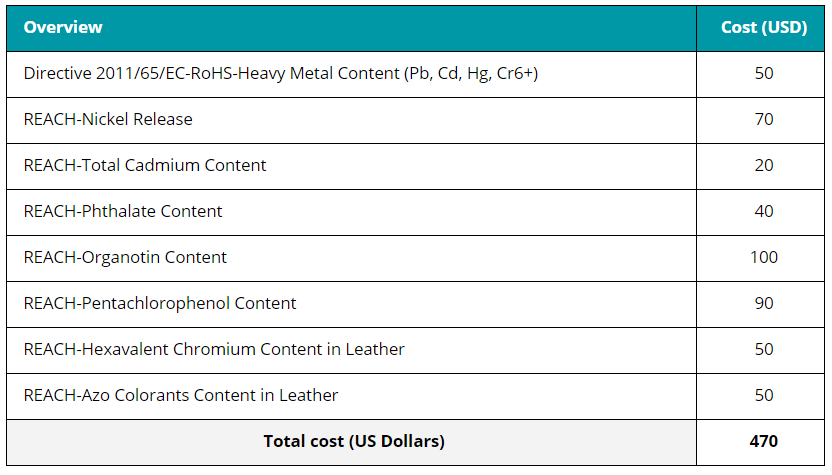How do you know which product safety standards and labeling requirements apply to your product?
Finding information on product regulations, be it a simple t-shirt or a new electronic device, is often the hardest part of the compliance process. In this guide, we list official websites and service providers that can help you find out which regulations apply to your products.
In addition, you will also learn how lab testing companies and consultants can help you assess mandatory product regulations and standards for your products.
Content Overview

FREE CONSULTATION CALL (US, EU & UK)
- Request a free 30-minute call with Ivan Malloci to learn how we can help you with:
- Find product requirements
- Certification and labeling
- Lab testing
Compliance Checklist
You’re not going to get very far unless you know what to look for using the sources referenced in this guide. While requirements differ depending on the product, age group and country – you should use this universal product compliance checklist when assessing which regulations and standards apply to your product:
1. Confirm mandatory product regulations and directives (e.g. REACH and CPSIA)
2. Confirm applicable product standards (e.g. EN, ASTM and ISO)
3. Confirm applicable labeling requirements (e.g. CE and CPSIA Tracking Label)
4. Confirm applicable documentation/certification requirements (e.g. DoC and CPC)
5. Confirm facility requirements (e.g. GMP and ISO 22000)

1. Official Websites
Information on product safety standards, certification procedures, labeling and documentation is publicly available in all developed countries. Although we’ve seen major improvements in the last few years, many government websites are still difficult for the uninitiated to navigate.
Assuming you manage to find what you’re looking for, it’s often even more difficult to interpret the information and apply it to your business. That being said, these government websites serve as a good introduction to understanding the basics.
United States
The CPSC, FDA, FCC and other US Government Agencies operate their own separate websites. As such, there is no official one-stop-shop for product regulatory information in the United States. Therefore, importers and manufacturers are required to search for information across various websites to get a complete picture.
CPSC
- Products: Toys and children’s products, consumer products, household products
- Website: www.cpsc.gov
FCC
- Products: Electronics
- Website: www.fcc.gov
FDA
- Products: Food contact materials, medical devices
- Website: www.fda.gov
Federal Trade Commission (FTC)
- Information: Labeling requirements, other
- Website: www.ftc.gov
U.S. Customs and Border Protection
- Information: General importing requirements
- Website: www.cbp.gov
ASTM
American Society for Testing and Materials (ASTM) is not a government website, but a an organization developing product standards for consumer products in the United States. While ASTM standards are normally voluntary, they serve as a reference point for importers and manufacturers.
That said, some US product regulations, including CPSIA, requires compliance with ASTM.
- Information: ASTM standards database
- Website: www.astm.org
UL
Underwriter Laboratories (UL) develop product standards for electronics sold in the United States. Similar to ASTM.org, you’ll find a database of UL standards on their website that can also be purchased.
- Information: UL standards database
- Website: ulstandards.ul.com
European Union
The European Union’s official website (ec.europa.eu) provides free and accessible information concerning CE marking, food contact materials, REACH and other product regulations.
That said, questions related to EU product regulations and EN standards can only be sent to national authorities in charge of product safety and chemicals compliance.
Links
Australia
Product Safety Australia
Productsafety.gov.au is the go-to website for Australian importers looking for information on mandatory standards covering the following product categories:
- Textiles
- Toys
- Children’s products
- Baby products
- Helmets
- Bicycles
- Furniture and home products
- Fitness equipment
- Sunglasses
- Vehicle equipment
EESS
The Electrical Equipment Safety System (EESS) website (www.eess.gov.au) provides information on mandatory electrical safety and EMC standards in Australia.
- RCM mark
- Steps for compliance
- Safety criteria
- EESS registration process
Standards Australia
Standards.org.au is a searchable database listing all AS/NZS standards developed by Standards Australia. Here you can find both mandatory and voluntary AS/NZS standards, ISO standards and IEC standards for all product categories.
2. Product Compliance Platforms
ProductIP.com
ProductIP.com is an online platform helping importers, exporters and manufacturers ensure compliance with EU product regulations. You can search thousands of products from within their platform, and access detailed requirements lists:
- List of EN standards and other regulations
- List of required (and optional) documents
- List of required (and optional) labels
ProductIP.com is easy to use and affordable, even for small businesses. It’s really a no brainer for any business looking to sell in the European Union.
Platform Features
- Requirements lists
- Technical file manager
- Compliance reviews
- Chemicals management
- Label checks
CE-check.eu
CE-check.eu a digital all-in-one solution helping importers, exporters and manufacturers to ensure compliance with CE marking directives. Not only can this platform help you in assessing mandatory CE directives and EN standards, but also the actual implementation of the CE compliance procedure.
They have various small business-friendly pricing plans, and even a free version.
Platform Features
- Free version
- Identifying CE Directives and Standards
- CE Compliance Assessment
- Creating a Technical file
- Creating a Declaration of Conformity
3. Product Testing Companies
Product testing companies can only offer a quotation once they have assessed applicable product regulations for a certain product. In addition, they also tend to list all required tests as part of the quotation.
Quotation Sample
While they obviously charge for lab testing, the quotation is always free. In other words, asking for a lab test quotation is the closest thing you’ll get to a free compliance assessment.
This is what you need to provide before requesting a quotation
- Product type
- Category
- Product image (recommended)
- Age group
- Manufacturing country
- Consumer country
List of testing companies
- Bureau Veritas
- SGS
- Intertek
- TUV
- QIMA
4. Compliance Consultants
While you a list of product standards and corresponding tests is a good start, it doesn’t do much to help you understand how the practical compliance process works.
Making a product compliant in practice requires an understanding of technical safety requirements, how to create correct label files and documentation, and even production facility requirements.
While online platforms and government websites can take you a long way, support from a professional is often the only what it takes to connect the dots.
Here’s how a consultant can help you
1. Confirm applicable product safety standards
2. Create label files and documentation
3. Technical/design product compliance review
4. Book lab test
5. Factory audit (e.g. GMP)
5. Amazon Seller Central
Planning to sell on Amazon? Then you should take a close look at the Amazon seller central to find assess which standards and other requirements apply to your product. Amazon requires that all products sold on its platform are compliant with mandatory regulations in each respective market.
That said, Amazon sets the bar even higher for some products, meaning that additional requirements, such as ISO 9001 factory certification, is required.






















How to spot product data sheet is original or fake? For example seller provides you that his product meets with requested requirements but you have some doubts about it
I work at a food warehouse where the line rails are coming off or extremely loose, we use the lines daily to.put crates on them to put the food in, is it a major safety violation to have them.like that or do I need to have them put new ones on.